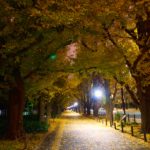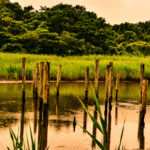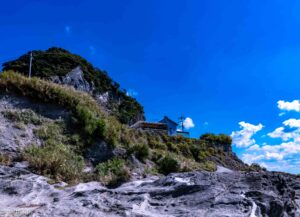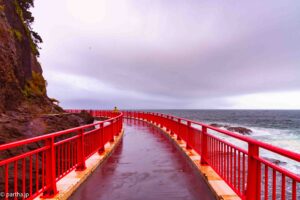
Typhoon Nanmadol was inching close to Kyushu when we set out on our drive to Shonandai. The hotel had been booked a few weeks in advance much before the existence of this typhoon was revealed. The rains and winds were expected to be severe and the depression that was forming along the coast did not look encouraging.
But the trip had to be done, the drive was only around an hour long and mostly over highways and no one was warning anyone not to go out anywhere. So we drove on the highways and then through narrow country roads and the rains came down hard. The rain started as a drizzle and increased in intensity until the roads were barely visible and water splashed as we hit the curves.
But we reached Shonandai without much incident, the traffic was sparse and the roads though narrow occasionally flooded were not a challenge. We checked into the hotel and set out on foot to explore the town.
Shonandai has the look of a college town which is not surprising as Keio University has a fairly large campus nearby. There is a spattering of mid-sized malls, izakayas , pachinko parlours and convenience stores. We headed to the Shonnandai park after realising that the Owl Park mentioned on a few websites had shut down a while ago.
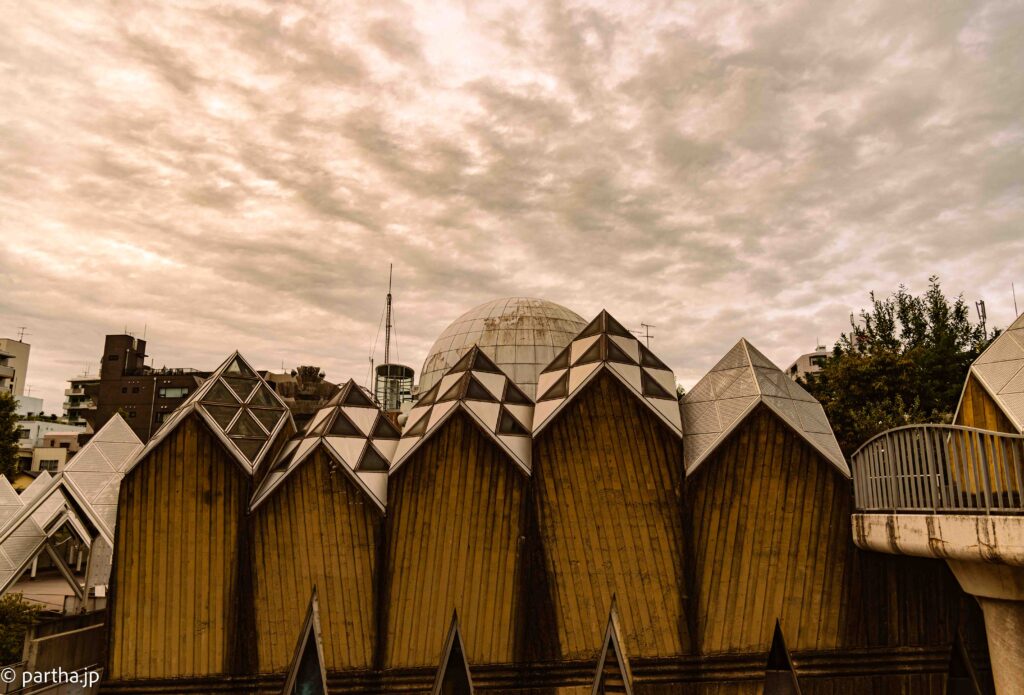
The wide streets give the feel of a newly built town, and there were more than a few curious stares at tourists in this non-touristy town. The Shonandai Cultural Centre is an interestingly designed building. The architecture is modernist and quaint, apparently meant to inspire curiosity in both children and adults. There is a walkaway connecting to the park, a green space dotted with curiously shaped rock formations which gives a Stonehenge type vibe to the place.
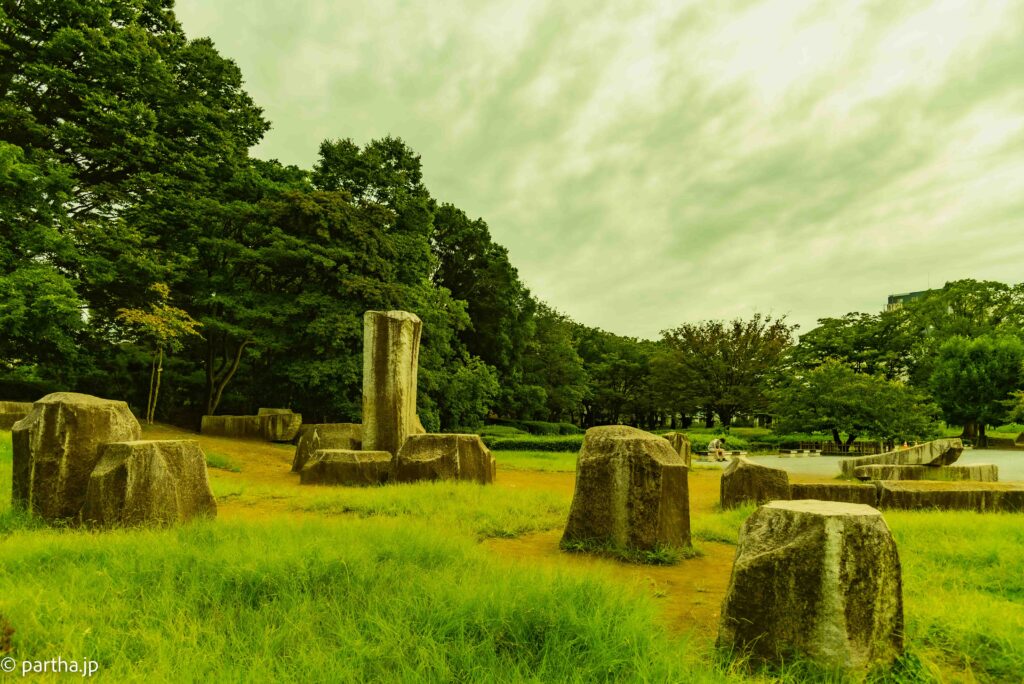
Once you explore both the cultural center and the park, you have essentially covered most of what there is to see in Shonandai.
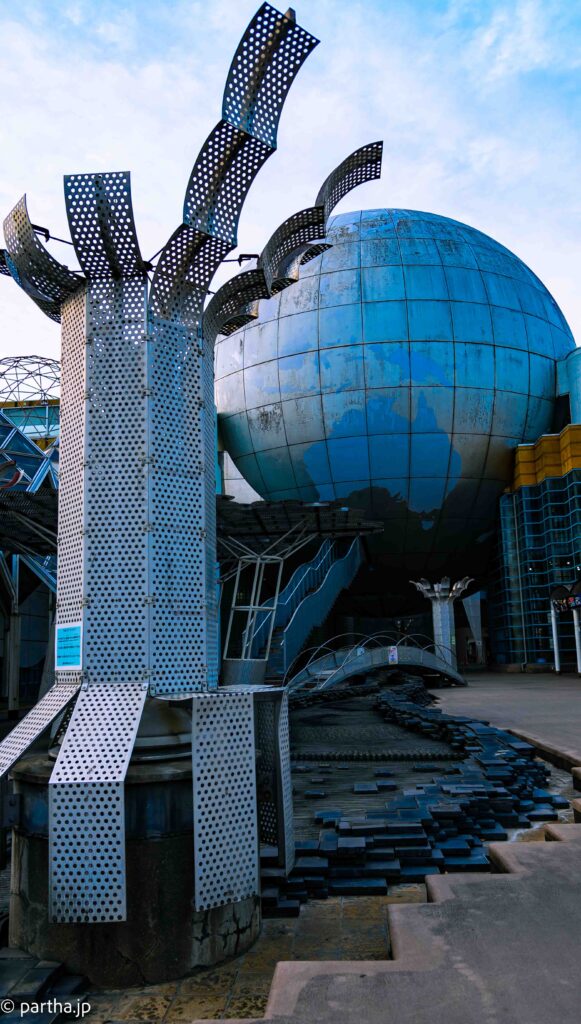
But we were not there to see Shonandai, the destination was Enoshima, a small island off the Shonan coast connected by a bridge with the mainland. Shonandai was the base and the only reasonably priced hotel available was near the Shonandai station. Though the approaching typhoon apparently resulted in cancellations and the hotel was still showing availability when we checked in. We drove to Enoshima the next morning with a plan to arrive early to find parking on the limited slots that were available on this small island.
The skies opened up as we left and the the 30 minutes drive to Enoshima was in heavy pounding rain. Visibility was down to a few feet in parts of the drive and miraculously the rain let up when we crossed the bridge into the island.
Parking was easy to find at 09:00 in the morning, the trouble was in navigating the island using google maps. The island is divided into a yacht harbour and a forested hill where shrines are scattered.
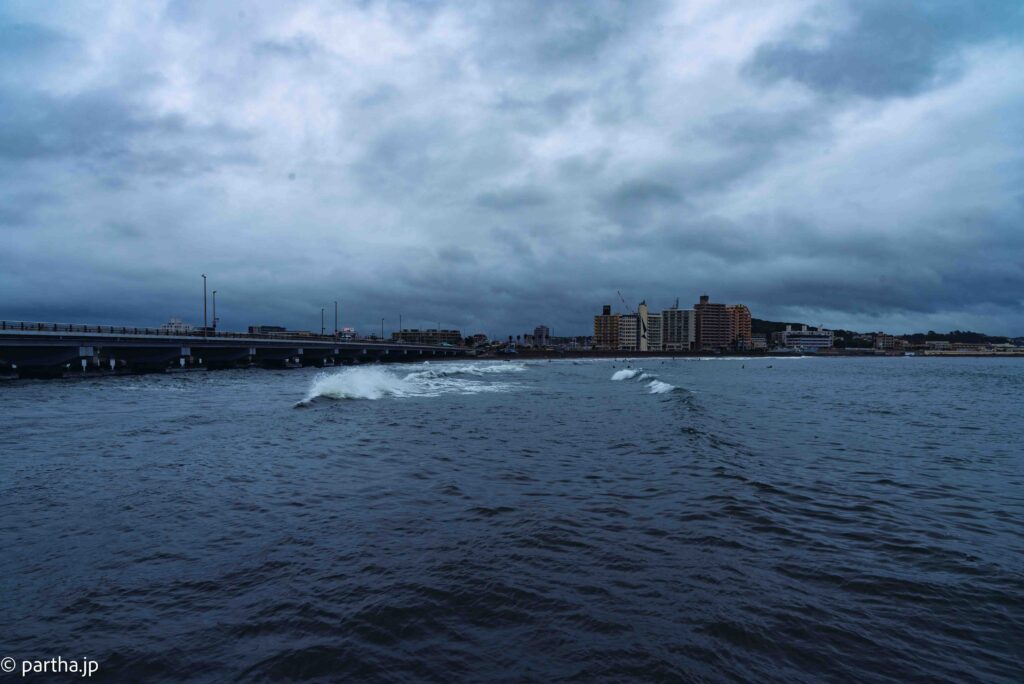
After a few attempts to walk across the residential part of Enoshima, we decided to walk back to the main road closer to the bridge and watch the surfers on the beach across the bridge trying to catch the perfect wave.
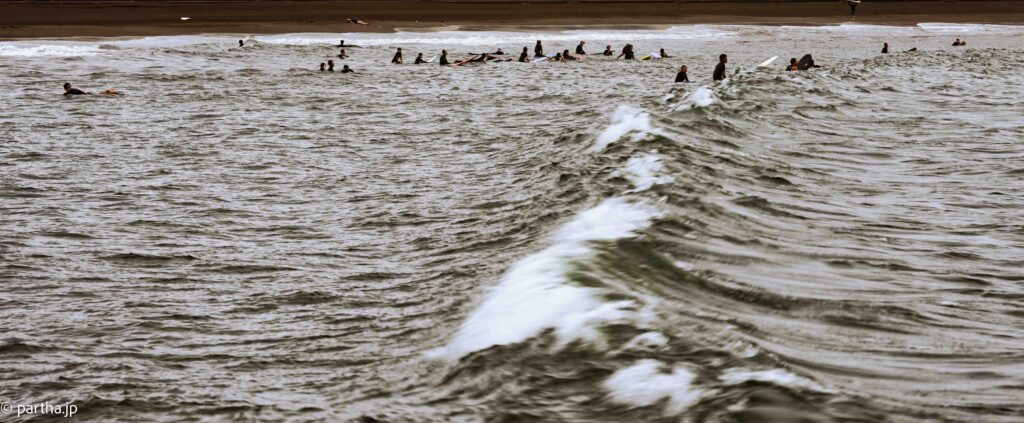
Typhoons bring out surfers in hordes as bad weather comes with the promise of high waves. We stood and watched as the surfers waited and waited, the waves did not come.
We headed to the hill and the shrines dedicated to Benten, a goddess of good fortune, wealth, music and knowledge. There is a Enopass which allows access to the Enoshima Candle, the Samuel Cocking garden and the escalators if you want to avoid the numerous stairs across the island. However the Cocking garden was going through a renovation and the lady at the tourist counter explained that the sales of the Enopass were suspended.
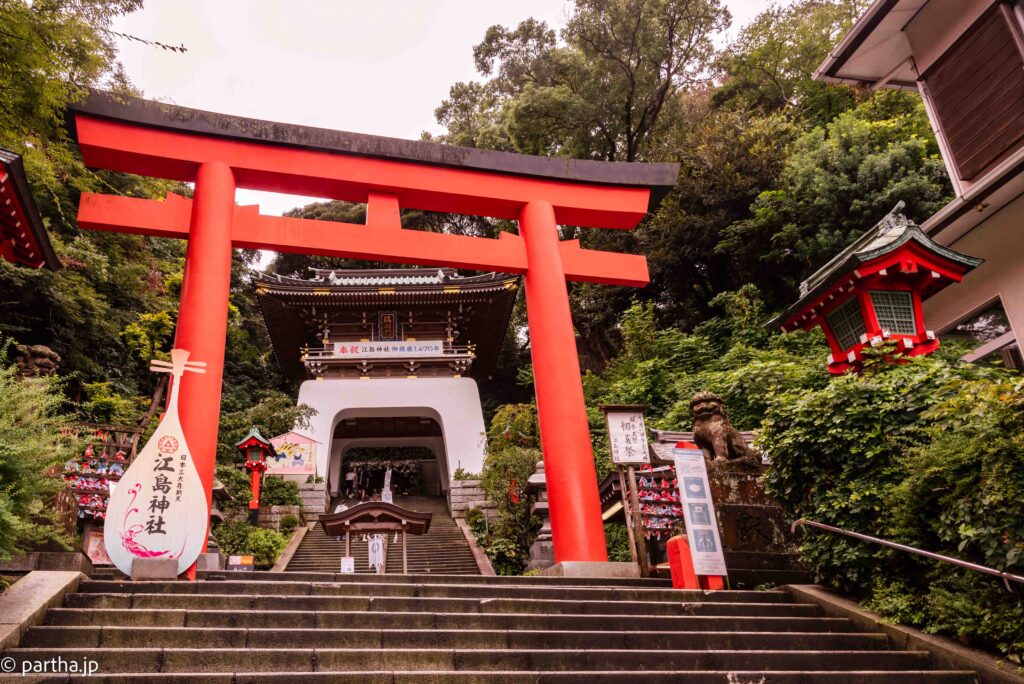
A windy, rain swept morning is the ideal time to explore the island, the crowds are sparse, the temperatures pleasant enough when trudging across the stairways, the only irritant is the occasional clouding of my spectacles in the humidity that the typhoon had sent across in advance.
The Enoshima Candle is a candle shaped tower with an elevator to the top which offers views of the island. The tower is lit up in the night and there are events in the gardens around the towers. There are a few cafes around the tower offering a break from the climbing.
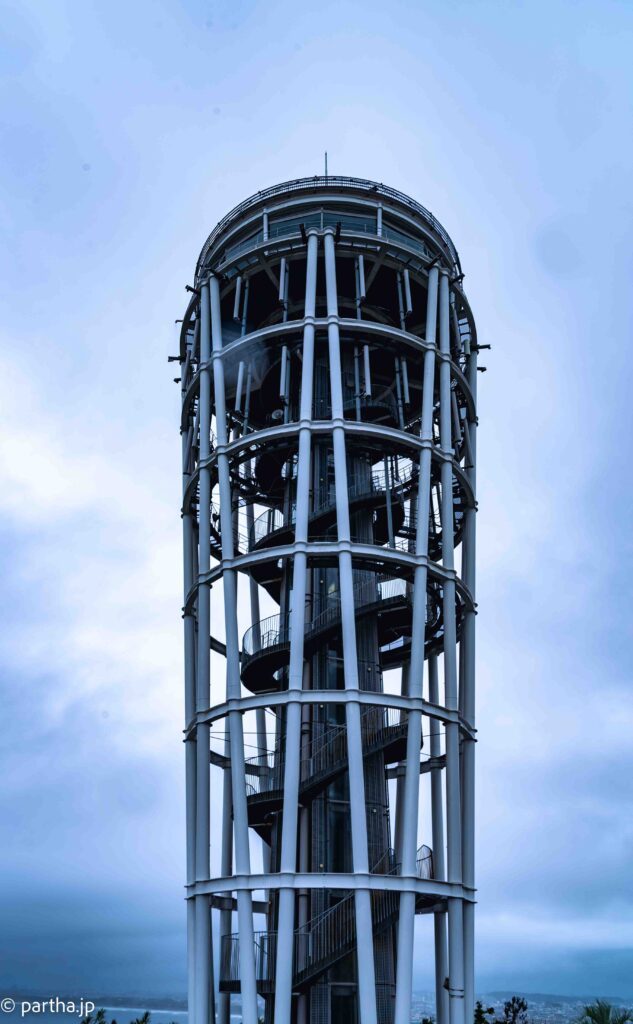
There are three shrines on the island which make up the Enoshima shrine. The biggest amongst these is the Hetsunomiya shrine where both locals and tourists come to worship the Benten goddess.
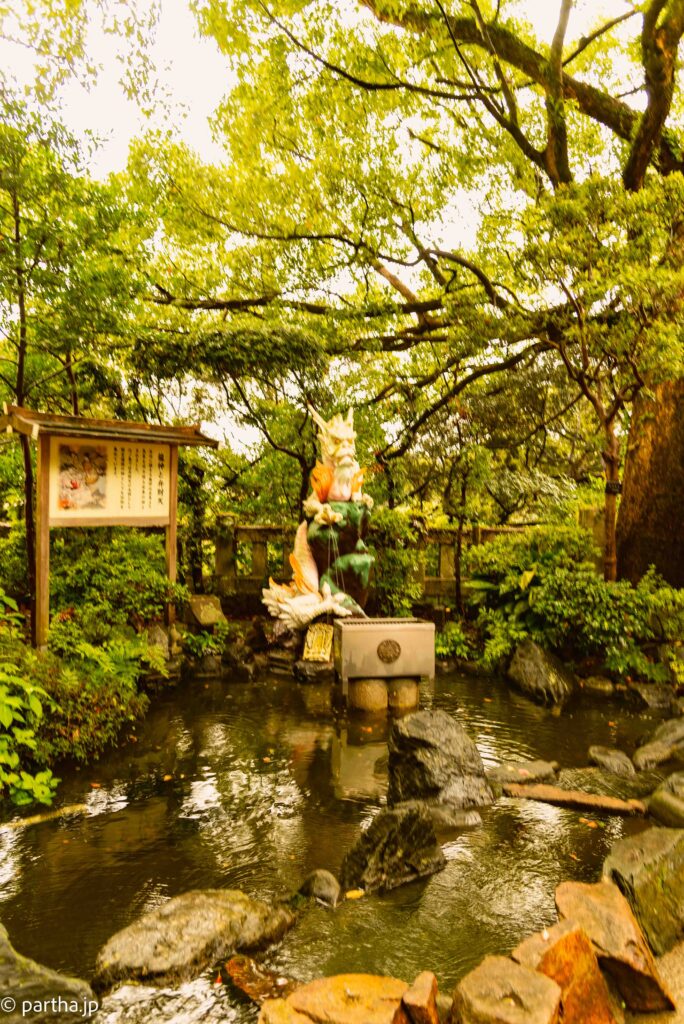
The Iwaya caves located on the southern end of the island is the last and the most spectacular of the attractions. There are two separate caves 152 metres and 56 metres deep and are accessible by a bridge, a scenic walkaway along the sea and have been formed by tidal erosions, carved out slowly over the ages. The Benzaiten faith, a religious group during the Edo period, traveled to the cave on pilgrimage and brought in stone sculptures which are scattered around.

The Ryuren no kane or the Dragon’s love bell is another attraction on the island with a legend attached to it. Couples who ring the bell and attached a padlock bearing their names to the wire fence will find eternal love.
It took us around four hours to walk around the island visit the shrines and attractions including a half hour break at the cafe. The island looks deceptively small but the excursion takes up time. There are sea food restaurants scattered along the walking paths, the Shirasu is a small white fish caught around Enoshima and is served raw or cooked over rice. There is also a Hawaiian burger cafe targeted towards the surfers and the younger crowd and a scattering of cafes.
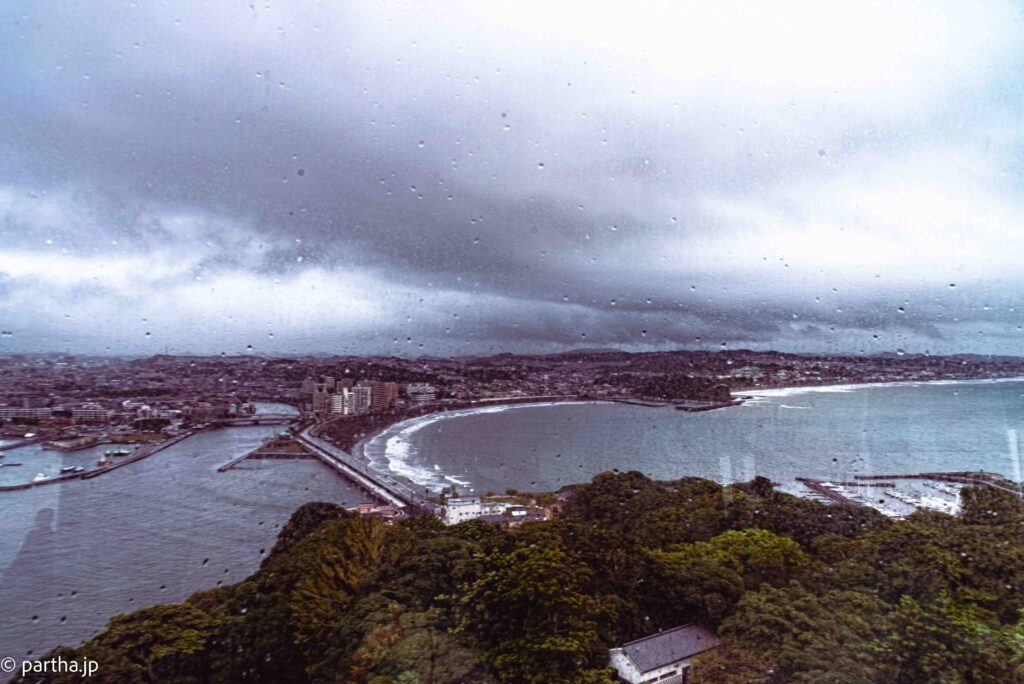
As we left the island, the skies opened up once again and the drive back to Shonandai was done in heavy rain. The next day as we drove back to Tokyo, despite a clear weather forecast, it rained heavily. The rain followed us through flooded country roads, up the highway making us miss a few exits but finally depositing us on in scattered rains in Tokyo.
The typhoon creeped up the southern part of Japan, bringing in heavy rains, floods and misery, and even though we were a thousand kilometres away, the precursor followed us all the way through the trip.

